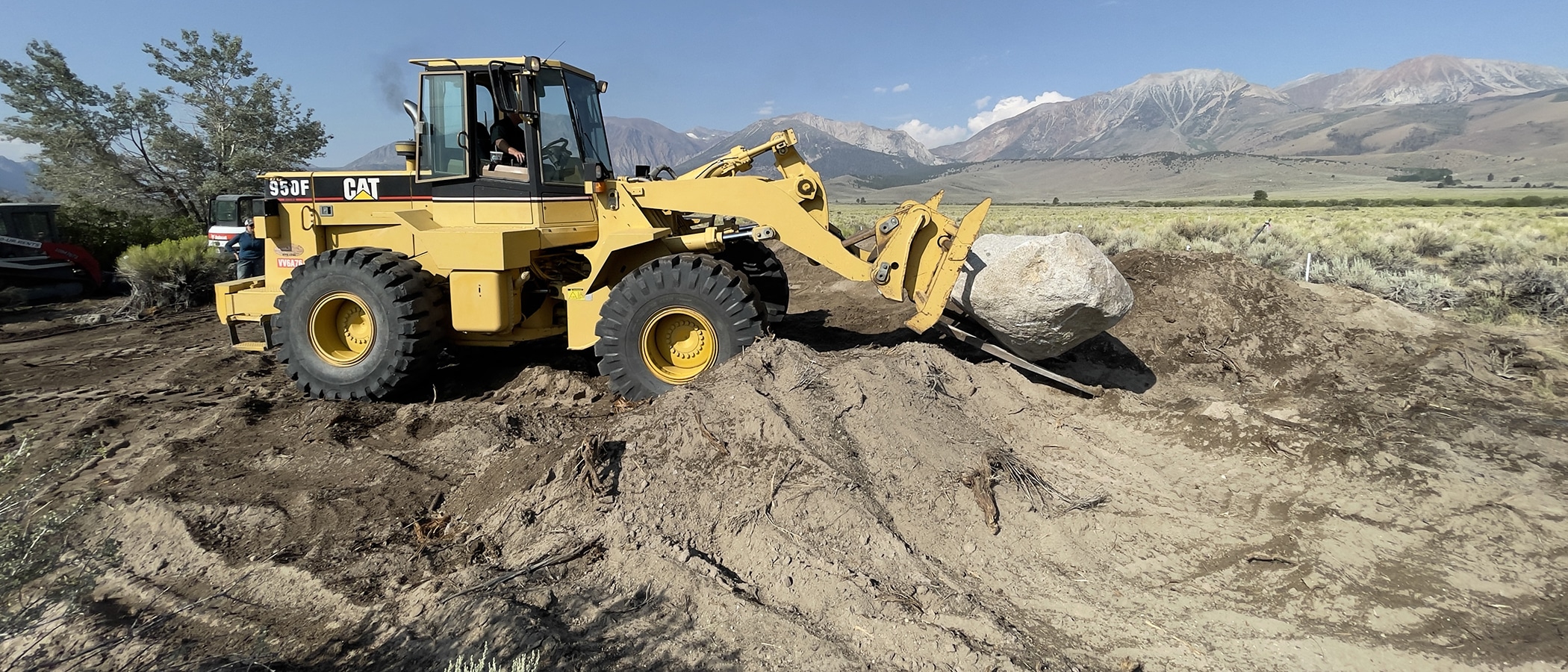
Exciting updates are happening at the Mono Basin Outdoor Education Center (OEC). As it exists today, the OEC program is transformative. It is designed to connect participants from Los Angeles to the source of their water, to the landscape of the Mono Basin, and to each other throughout their week-long visits. And we’re always thinking about how to make the program better.
One area we can improve to enhance participants’ experiences at Mono Lake is the OEC program’s home base, the house we lease from the Los Angeles Department of Water & Power (DWP). Over the years we have made improvements to the house like adding solar panels, a rain barrel, and efficient replacement windows. We have long wanted to improve the backyard, so this year we got the ball rolling on plans to update it to accommodate a more immersive and safer experience for participants.
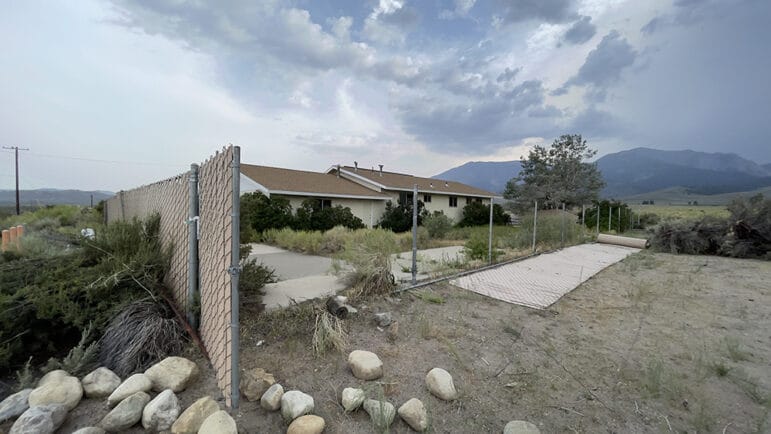
Until now, participants have slept on tarps on the front lawn of the OEC with nothing blocking the sights, sounds and smells of Highways 158 and 395. The first phase of this multi-year project was designed to move the sleeping and gathering area from the front yard to the safety the backyard provides. There, participants will not only have more solitude and quiet, but will also be immersed in a landscape design that mimics the Mono Basin.
We have been fortunate to partner with Watershed Progressive—a prestigious and water-focused design-build collaborative. Integrating their expertise in water conservation through the design will reinforce the lessons of what conserving water can look like. Watershed Progressive took our ideas and brought them to life. We broke ground in late July and the first phase is nearly complete!
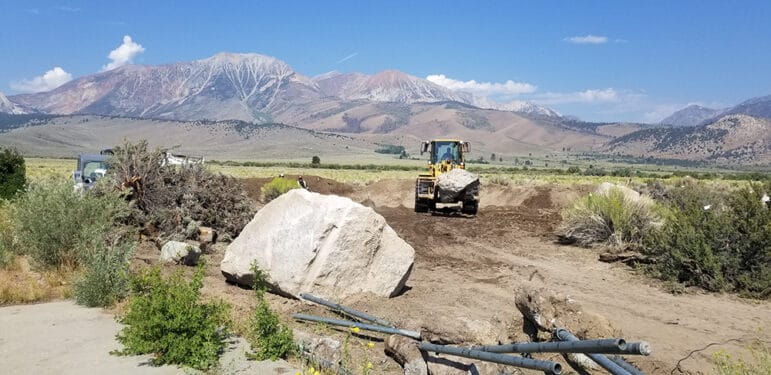
This first phase includes a gabion fence and earthen berms to help protect the backyard from wind. There is a beautiful amphitheater with a campfire circle where we’ll be able to gather to open and close each group’s week-long visit. Ample area for participants to sleep winds its way throughout the design. The new space lends itself to areas where people can journal, look out across the Sierra or up into the night sky, connect to each other without cell phones, or sit in solitude.
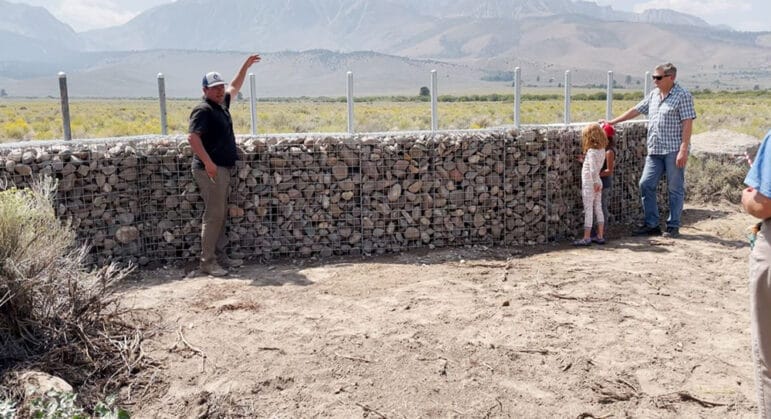
Enhancing the space will bring a level of safety and comfort that has not existed in this way at the OEC for the past 25 years. The improved privacy, peacefulness, and educational themes incorporated into the project will strengthen participants’ connection to the Mono Basin. As mentioned before, the landscaping is designed to mimic the Mono Basin—berms and boulders simulate the Sierra Nevada, the campfire circle gathering area is reminiscent of Mono Lake, and the winding sandy washes where participants can sleep resemble the tributary streams. Even though many of the OEC lessons are learned throughout the Mono Basin, having the program’s home base reflect those thoughts is important.
This project is also a successful collaboration between the Mono Lake Committee, DWP, and the Mono Lake Kutzadika’a Tribe. The Committee consulted with both DWP and the Tribe on the plans and a Tribal monitor has been on site during construction to make sure the earth work did not disrupt any culturally significant artifacts or sites. Future phases include working with the Tribe to incorporate traditional ecological knowledge to the landscaping.
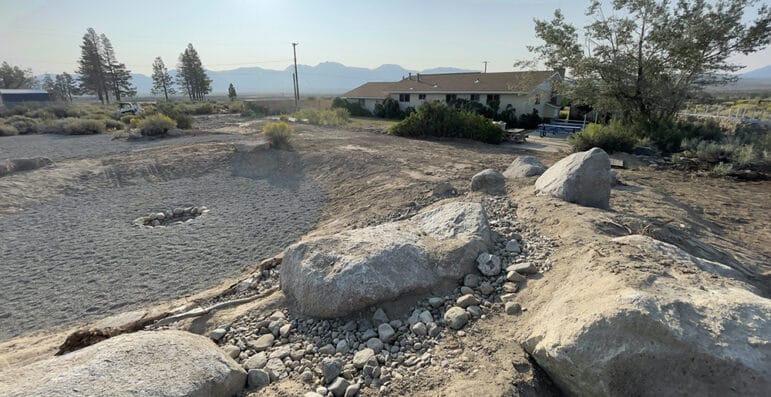
The entirety of the backyard plan is designed in phases as a multi-year project so we can make sure these updates are meaningful and intentional. We will continue to identify pinch-points in the program that can be addressed through future projects. This project has been a long time coming and we are excited to see it finally happening!
To learn more about the OEC landscaping project, or if you are interested in contributing funds to support the work, please send me an email or give me a call at (760) 647-6595.
Top photo by Santiago Escruceria.
